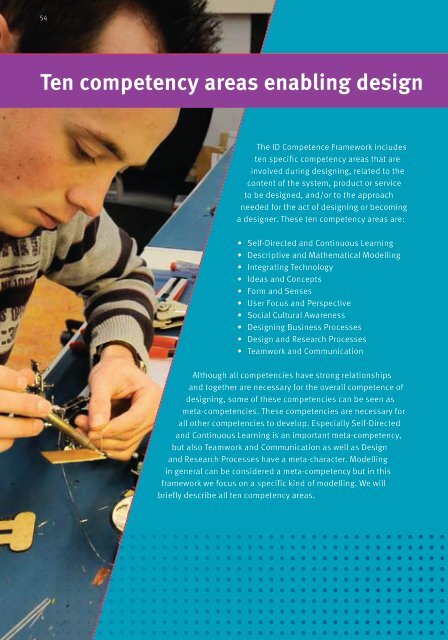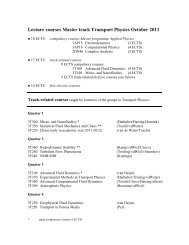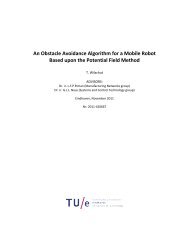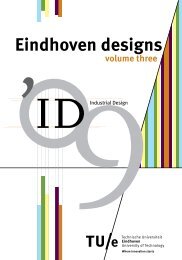Education guide 'Eindhoven designs' - Technische Universiteit ...
Education guide 'Eindhoven designs' - Technische Universiteit ...
Education guide 'Eindhoven designs' - Technische Universiteit ...
You also want an ePaper? Increase the reach of your titles
YUMPU automatically turns print PDFs into web optimized ePapers that Google loves.
54<br />
Ten competency areas enabling design<br />
The ID Competence Framework includes<br />
ten specific competency areas that are<br />
involved during designing, related to the<br />
content of the system, product or service<br />
to be designed, and/or to the approach<br />
needed for the act of designing or becoming<br />
a designer. These ten competency areas are:<br />
• Self-Directed and Continuous Learning<br />
• Descriptive and Mathematical Modelling<br />
• Integrating Technology<br />
• Ideas and Concepts<br />
• Form and Senses<br />
• User Focus and Perspective<br />
• Social Cultural Awareness<br />
• Designing Business Processes<br />
• Design and Research Processes<br />
• Teamwork and Communication<br />
Although all competencies have strong relationships<br />
and together are necessary for the overall competence of<br />
designing, some of these competencies can be seen as<br />
meta-competencies. These competencies are necessary for<br />
all other competencies to develop. Especially Self-Directed<br />
and Continuous Learning is an important meta-competency,<br />
but also Teamwork and Communication as well as Design<br />
and Research Processes have a meta-character. Modelling<br />
in general can be considered a meta-competency but in this<br />
framework we focus on a specific kind of modelling. We will<br />
briefly describe all ten competency areas.

















